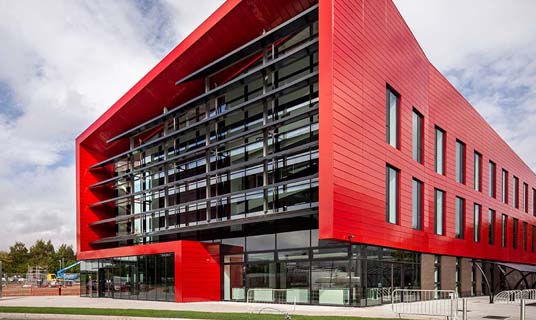Procurement for education and community buildings made easy
The quality of school buildings has been found to have a significant impact on how students learn and the outcomes of their education. In 2019, a study conducted by Maryland’s Morgan State University and others found that changing the design of a classroom could significantly decrease students’ stress levels and at the same time increase average test scores three-fold.
Meanwhile, the RIBA Better Spaces for Learning report highlighted the role of good school design on pupil wellbeing, attendance, behaviour and attainment as well as teacher wellbeing, productivity and retention.
In short, a school’s design and condition impacts those who work and study there at every level.
Unfortunately, in many of the UK’s education buildings, the environment in which pupils are taught is less than adequate. Moreover, a 2017 National Audit Office report revealed that to get all school buildings up to scratch would cost an estimated £6.7 billion.
Funding schools for the next generation
So, what can be done for the future of education buildings to ensure they are structurally sound, healthy and nurturing environments, and can also be built and maintained under tight budgets?
A series of government school building programmes have funded a large number of refurbishments and re-builds for the worst-hit primary and secondary schools and colleges over the past two decades.
Announced in June 2020, the latest School Rebuilding Programme will fund major rebuilding and refurbishment projects at 500 schools and sixth form colleges in England over the next decade. The funding is to be distributed nationally over a 10-year period and the investment will be prioritised based on the condition of the buildings.
The first 100 schools to receive funding have been announced and the government has recently consulted on how to prioritise subsequent schools.
However, not every school will be eligible for this batch of central government funding. Others will have to rely on bidding for capital funding through the Condition Improvement Fund (CIF) or the School Condition Allocations (SCA) fund to benefit from refurbishments, extensions and upgrades.
Finding reliable contractors quickly
School refurbishments and extensions are typically scheduled to have the most disruptive works completed during the six-week summer break – to minimise impact on education and examinations. And with much capital funding allocated on a short-term basis each financial year, the need to act quickly for these projects is paramount.
With this in mind, finding a reliable and straightforward way to find contractors to carry out the work without needing to go through time-consuming procurement processes can be a great help.
CPC’s Public Buildings Construction and Infrastructure (PB3) framework does just that. It allows local authorities, social landlords and other public sector bodies to source contractors for works relating to the construction and refurbishment of educational, healthcare, emergency service and community buildings.
The framework can also be used for residential properties within mixed-use developments, student accommodation, conversion of commercial building for residential use, and can include associated infrastructure works.
Dean Fazackerley, head of technical procurement at LHC, said:
“Building on the success of our previous Schools and Community Buildings framework, we’ve broadened the scope of PB3 to allow local authorities to easily source quality contractors that will also help them to achieve low energy and zero carbon buildings and infrastructure projects.
“We’re pleased to have a range of regional and national contractors appointed to the framework, and with over 40% of the appointed companies being classed as an SME.’’
One such contractor appointed to the PB3 framework is Kier, which has a successful track record of working with LHC on previous frameworks.
One project delivered by Kier using our previous SCB framework is the STEM Centre for New College Durham. The project involved the construction and refurbishment of classrooms, workshops and conference facilities including a three-storey extension to the existing technology block. It was successfully delivered in a live school environment with careful management to minimise disruption to students and staff.
The PB3 framework has four workstreams which cover projects at three different value bands:
- new build only;
- refurbishment only;
- new build and refurbishment;
- new build, refurbishment and infrastructure.
And for buildings that are designed to be built using modular methods of construction, our MB2 Modular Buildings framework provides public sector organisations with easy access to off-site manufactured, volumetric and panelised building systems.
If you’re looking for help with upgrading, refurbishing or rebuilding an education or community building then get in touch here. We have the frameworks, the experience and the contractor relationships in place to ensure delivery of a smooth and successful project, every time.


